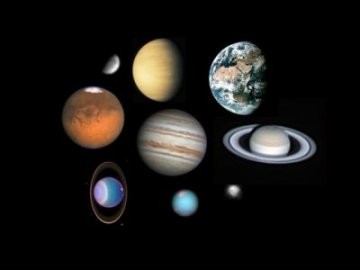Yupiter Planetasi Turali Mlmet

Adobe Application Manager is licensed as Freeware for Windows (32-bit and 64-bit) operating system / platform from without restrictions. Adobe Application Manager 10.0 is available to all software users as a free download (Freeware). Download adobepatchinstallerexe free.
No spacecraft has gone farther than Voyager 1. The spacecraft is currently exploring a transitional zone between our solar system and interstellar space. • Voyager 1 was the first spacecraft to cross the heliosphere, the boundary where the influences outside our solar system are stronger than those from our Sun. Most scientists agree Voyager 1 will not have truly left our solar system until it passes through the Oort Cloud in a few hundred years. • Voyager 1 also made detailed studies of Jupiter and Saturn.
Free download adobe dreamweaver 8 full version with crack. You may get a warning from chrome but you can ignore it. • It will be all up to you whether you install this tool or not.
• It carries one of two copies of the —a message from humanity to the cosmos that includes greetings in 55 languages, pictures of people and places on Earth and music ranging from Beethoven to Chuck Berry's 'Johnny B. Launch Date Sept. 5, 1977 12:56:01 UT Launch Site Cape Canaveral, Fla., USA Launch Complex 41 Launch Vehicle Titan IIIE-Centaur (TC-6 / Titan no.
The discovery of this strange comet was both serendipitous and completely unexpected, and the rest of the world was startled when the image was released three days later. The Study and Practice of Buddhism Nowadays. In its more than 2500 years of history in its propagation, “Buddhism” has long been associated with folklores and local spirits while being spread through various local communities and cultures, which has thus secularized and distorted the real nature and authenticity of “Buddhism”, making it rather confusing in different contexts, and thus.
23E-6 / Centaur D-1T) Destination Jupiter, Saturn, Beyond Our Solar System Type Flyby Status Successful—Extended Mission in Progress Nation United States Alternate Names Mariner Jupiter/Saturn A, 10321, 1977-084A Goals Voyager 1 and 2 were designed to take advantage of a rare planetary alignment to explore the outer solar system. Voyager 1 targeted Jupiter and Saturn before continuing on to chart the far edges of our solar system. Accomplishments Voyager 1 successfully flew by both the Jupiter and Saturn systems before continuing out into the farthest most reaches of our solar system. Voyager 1 has been observing the interplanetary medium throughout its journey, and is now in interstellar space—since August 2012.
29, 2017, engineers successfully fired Voyager 1’s thrusters after 37 years of inactivity. Jupiter Accomplishments During the Jupiter leg of its journey, Voyager 1 was to explore the giant planet, its magnetosphere and moons in greater detail than the Pioneer spacecraft that preceded it.
Voyager 1 was not only to study Jupiter, but to use it as a springboard to Saturn, using the gravity-assist technique. Voyager 1 succeeded on all counts, with the single exception of experiments using its photopolarimeter, which failed to operate. Jupiter's atmosphere was found to be more active than during the visits of Pioneer 10 and 11, sparking a rethinking of the earlier atmospheric models which could not explain the new features.
The spacecraft imaged the moons Amalthea, Io, Europa, Ganymede, and Callisto, showing details of their terrain for the first time. Possibly the most stunning of Voyager 1's discoveries was that Io has extremely active volcanoes, powered by heat generated by the stretching and relaxing the moon endures every 42 hours as its elliptical orbit brings it closer to and then farther from Jupiter. This finding revolutionized scientists' concept of the moons of the outer planets.
The spacecraft also discovered a thin ring around the planet (then making it the second planet known to have a ring), and two new moons: Thebe and Metis. Saturn Accomplishments Voyager 1 targeted Jupiter and Saturn before continuing on to chart the far edges of our solar system. Voyager 1 was to become the second spacecraft to visit Saturn. Its mission there was to explore the planet and its rings, moons, and magnetic field in greater detail than was possible for its predecessor, Pioneer 11. Voyager 1 met all of its goals except for the experiments planned for its photopolarimeter, which failed to operate.
The spacecraft found three new moons: Prometheus and Pandora, the 'shepherding' moons that keep the F ring well-defined, and Atlas which similarly shepherds the A ring. Saturn's largest moon, Titan, was found to have a thick atmosphere which hides its surface from visible-light cameras and telescopes. Spacecraft instruments showed it to be mostly nitrogen, like Earth's atmosphere, but with a surface pressure 1.6 times as high as ours. The spacecraft also imaged the moons Mimas, Enceladus, Tethys, Dione, and Rhea; revealed the fine structures of Saturn's complex and beautiful ring system; and added the G ring to the list of known rings. Just as it used Jupiter's gravity to help it reach Saturn, Voyager 1 used a gravity assist at Saturn to alter its course and increase its speed, giving it a trajectory to take it out of the solar system. Voyager 1 entered interstellar space in August 2012.